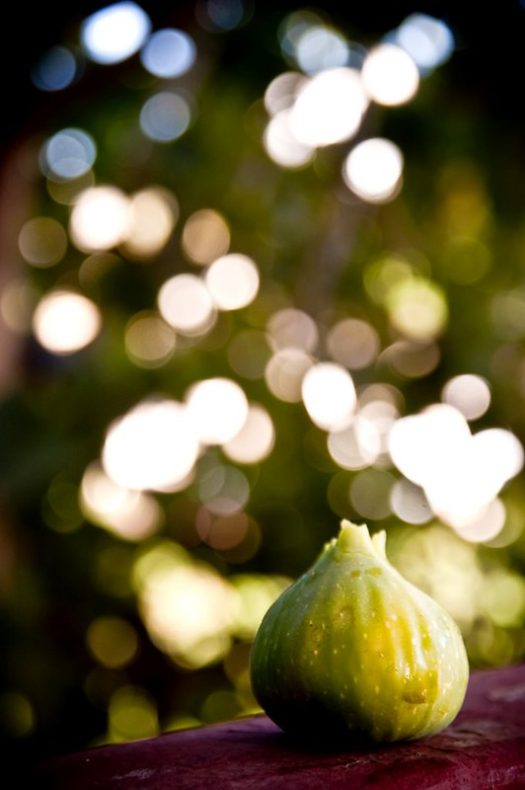
It’s fig season again! But this year, it’s a little lackluster. It’s not the birds getting to the figs. It’s not the squirrels. There are only a few figs, and the ones that have appeared seem tired. Some of them are falling to the ground before they start to ripen, others are sitting small and hard on the tree. Maybe it’s just been a long dry summer. But the light is changing, the days are shortening a handful of minutes at a time. Maybe there are a few more sweet things to come before autumn sets in.
*
When we first moved into this house, we planted a fig tree in the backyard. It looked sad and scraggly for a long time—years, in fact. I would go over to the houses of friends who had fig trees in August, and these trees would be dripping with figs. I would ask how old the trees were, and they’d say things like, “Oh, we planted that last year!” I would come home and make puppy dog eyes at my little fig tree.
And then—BOOM! Five years ago, August came, and the figs were there. I’d battle it out with the birds to get the fruit first. We got a net to protect the figs. The birds figured out how to get into the net, although sometimes they needed help getting out. I would curse the birds as I peeled the net away—they’d fly off and I’d feel happy, but slightly miffed that they’d gotten something I wanted. Then a year came when we had to have friends help pick it because there were too many. There were even figs left after the birds got in and out of the net.
This year, there were so many figs that the birds couldn’t keep up either. We never put the net up. Every day, there are more figs, sitting on their stems like purple jewels. The ground below is littered with ones we haven’t gotten in time. In the morning the air around the tree smells sweet; in the height of the day when the sun beats down, it smells like the morning after a fig wine bender.
People have been reveling in the fig for thousands of years—it may be the earliest cultivated fruit. Researchers excavating in a village in the Jordan Valley found nine carbonized figs dating back more than 11,000 years, even before crops like wheat, corn and barley emerged. These were parthenocarpic figs, which means they don’t need insects for pollination—to produce more trees, people would have planted stems. These planted stems grow roots and leaves and their very own figs. The researchers explained that people at the time must have recognized that these fig fruits did not turn into new plants on their own, and started to cultivate these edible—yet non-reproductive—figs, following meandering mutations of these natural clones to develop the taste of the fruit. And the fruit isn’t even really a fruit—it’s a part of the stem that has grown into a teardrop-shaped container for the plant’s flowers.
In the middle of October, the fig leaves are starting to turn yellow; soon, there will be no more fruit. But there is another fig tree on the shadier side of the yard. These ones are Genoa figs, pale green with hot pink inside. We planted this tree about eight years ago, when my son was born. It has been slow to grow, mostly looking like a dowsing stick. This year, it has two short leaf-covered branches and has produced a half-dozen figs.
Elsewhere in the world, researchers are using fig trees like Ficus elastisca and Ficus thonningii to build resilience in the face of climate change. These superpower figs can shore up hillsides and provide drought-resistant food for livestock.
Our little Ficus carica trees can’t do much but feed us and the birds between August and October. But having one fig tree already has given me a little more patience with the second. Someday, we may have to fight the birds over our little green-figged tree. Someday, there may be more than enough to share.
*
Image by Flickr user Jack Fussell under Creative Commons license